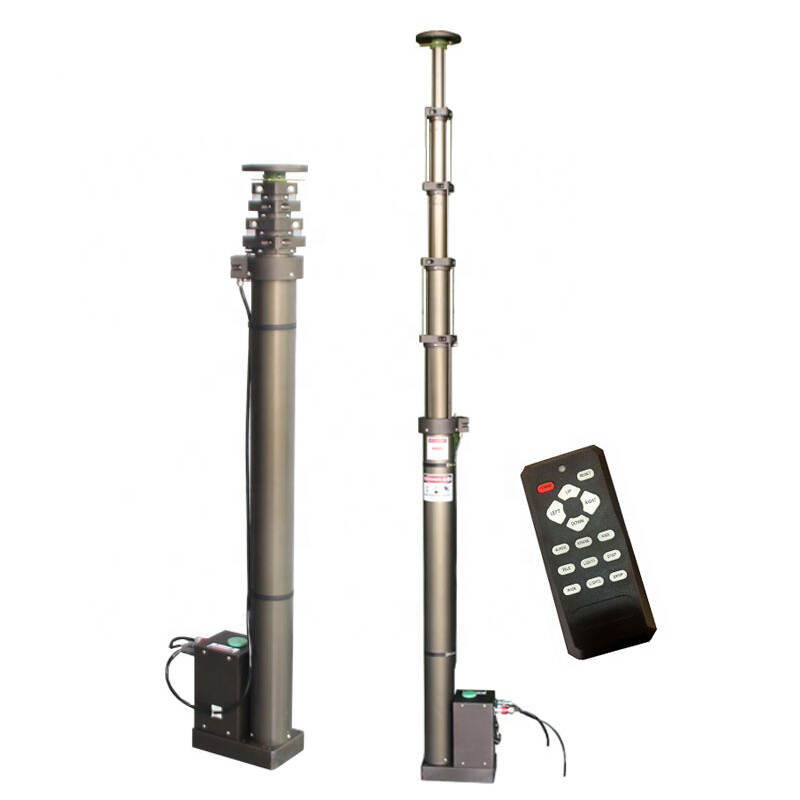Manual Telescopic Mast vs. Electric and Pneumatic Masts: A Comparison
June 06,2023
Telescopic masts are used in a variety of industries such as emergency response, solar power, telecommunications, leisure, hospitality, and outdoor activities. They come in different types, such as manual, electric, and pneumatic. Each type has its own advantages and disadvantages. This article aims to compare manual telescopic masts with electric and pneumatic masts to help you determine which type is most suited for your application.

Manual Telescopic Mast
Manual telescopic masts, as the name suggests, are operated by hand. They consist of sections that slide one within the other and are held in place by retaining screws or clamps. The mast is extended and retracted by manually rotating a winch. Manual masts are simple to operate, cost-effective, and do not require a power source. They are ideal for applications where power is not available, such as outdoor events, camping trips, or emergency situations.
One disadvantage of manual telescopic masts is that they require more effort to extend and retract compared to electric or pneumatic masts. They are typically shorter in height, and as a result, do not offer as much flexibility in terms of the height of the mast.
Electric Telescopic Mast
Electric telescopic masts are powered by electricity and operated by a motor. They consist of sections that are connected by a chain or belt and extend and retract vertically. Electric masts are simple to operate and offer greater flexibility in terms of height. They are ideal for applications where frequent deployment and retraction of the mast is required.
One disadvantage of electric telescopic masts is that they require a power source, either a battery or AC power supply. This can be limiting if the application is in an area where no power is available. They are also more expensive and complex to operate compared to manual masts.
Pneumatic Telescopic Mast
Pneumatic telescopic masts are powered by compressed air and operated by a pneumatic cylinder. They consist of sections that are connected by a cable or chain and extend and retract vertically. Pneumatic masts are ideal for applications where a power source is not available but compressed air is. They are also suitable for applications that require rapid and frequent deployment and retraction of the mast.
One disadvantage of pneumatic telescopic masts is that they require a compressed air source, which can be limiting in certain environments. They can also be more expensive and complex to operate compared to manual masts.
Conclusion
In conclusion, manual, electric, and pneumatic telescopic masts each have their own advantages and disadvantages. The choice of which type to use depends on the specific application and requirements. Manual masts are simple to operate and cost-effective but require more effort to extend and retract. Electric masts are flexible in terms of height but require a power source. Pneumatic masts are ideal for applications where a compressed air source is available but can be limiting in certain environments. Ultimately, the decision of which type of mast to use depends on the needs of the application.